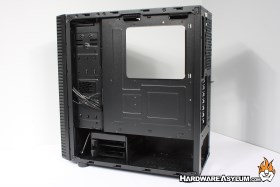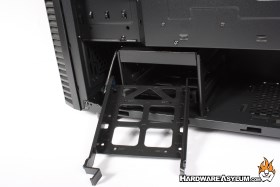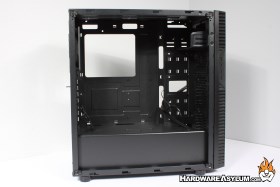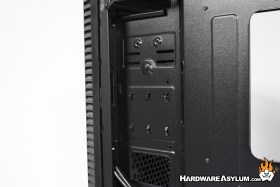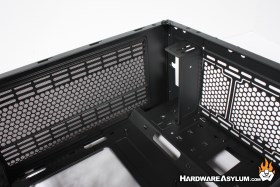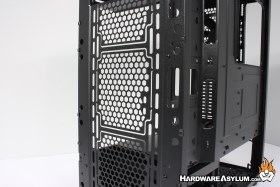SilverStone Precision PS14-E Evolution Case Review
Author: Dennis GarciaCase Interior
The Precision PS14-E features a “basement” that separates the motherboard section of the case from the power section. Personally I like how this feature has become common in modern case designs as it really helps to clean up the build. You’ll find an internal drive rack supporting 3.5” hard drives under the basement panel with direct access to the cable chase.
Running cables has become easier over the years with the addition of the basement panel and a cable chase. Typically the chase is located forward of the motherboard where the external, and internal, drives were located. The area has been raised slightly to support cables and give users a place to install two surface mount 2.5” SSD drives.
As a casemodder I often look over the construction of any chassis to see what kind of modifications can be made and determine if the construction can support it. As with most modern cases they are mostly a mesh panel with some structural bends to increase panel strength.
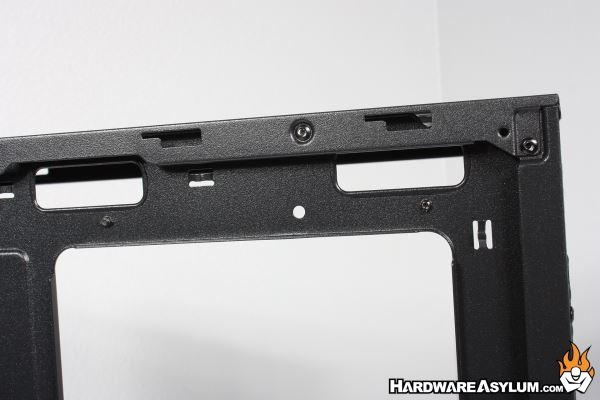
Rivets are used in certain key locations to lock panels together and while it appears that SilverStone has min-maxed the number of rivets in this case it is surprisingly strong.
As you may expect the material used is quite thin and will rattle however, once the heavy glass and side panels have been installed the resonance is reduced quite a bit. This is something to keep in mind whenever anyone says a case is made from thin material, often times this can lead to unwanted noise but, if the panels fit well some of that can be negated.
I mentioned that the case is mostly a mesh panel and this can easily be seen by looking at the front panel. Here you’ll see the front fan mounting locations with the option to knock out the opening to fully expose the fan. Or you can leave the panel intact and add some extra strength to the panel.
Along both sides of the front panel you'll find a multitude of slotted holes that help to facilitate fan and radiator installations while giving the user options over drilling custom holes or breaking out the dremel.

